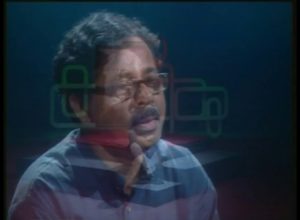Throughout history, humanity has been captivated by the enigmatic stories and artifacts of ancient civilizations. These mysteries—ranging from lost cities to cryptic symbols—have fueled archaeological pursuits and inspired countless stories. Today, the advent of modern gaming offers innovative avenues to explore these ancient worlds in engaging and educational ways, bridging the gap between past and present.
Table of Contents
- The Educational Power of Modern Games in Revealing Ancient Histories
- Key Concepts in Unraveling Ancient Mysteries Through Games
- Case Study: «Le Pharaoh» as a Modern Illustration of Ancient Egyptian Themes
- Analyzing Game Mechanics that Foster Discovery of Ancient Mysteries
- Beyond Entertainment: Educational Benefits and Limitations
- The Non-Obvious Layers: Cultural Preservation and Digital Heritage in Gaming
- Future Perspectives: Enhancing Educational Impact in Game Design
- Conclusion: Bridging the Past and Present Through Play
The Educational Power of Modern Games in Revealing Ancient Histories
Traditional methods of studying history—such as textbooks, lectures, and archaeological excavations—are invaluable but often lack the immersive appeal necessary to deeply engage learners. Modern digital games, however, introduce interactive environments that transform passive learning into active exploration. For example, games set in ancient civilizations allow players to navigate bustling marketplaces of Mesopotamia or decipher hieroglyphs in ancient Egypt, creating a visceral connection to the past. This immersive experience not only enhances understanding but also stimulates curiosity, motivating players to seek out factual knowledge beyond the game itself.
Research indicates that gamification can significantly improve memory retention. A study published in the Journal of Educational Computing Research found that students involved in game-based learning scored 20% higher on retention tests related to historical facts. This suggests that well-designed educational games serve as powerful tools for fostering long-term understanding of ancient cultures.
Key Concepts in Unraveling Ancient Mysteries Through Games
Successful integration of ancient themes into games hinges on several core principles:
- Cultural Representation and Historical Accuracy: Authentic depictions of architecture, clothing, language, and customs are vital. While some artistic license is acceptable, distortions can lead to misconceptions. Developers often collaborate with historians to ensure fidelity.
- Engagement Mechanics for Discovery: Puzzles, narrative quests, and exploration tasks mimic archaeological dig sites or deciphering hieroglyphs, fostering curiosity and problem-solving skills.
- Balancing Entertainment with Educational Integrity: Striking the right balance ensures the game remains fun while imparting accurate historical knowledge, avoiding oversimplification.
Case Study: «Le Pharaoh» as a Modern Illustration of Ancient Egyptian Themes
«Le Pharaoh» exemplifies how contemporary games can incorporate historical elements seamlessly into gameplay, serving as a compelling educational tool. The game’s design revolves around themes of ancient Egyptian mythology, architecture, and symbolism, creating an authentic atmosphere that immerses players in the world of pharaohs and pyramids. By integrating realistic visuals and narratives, the game invites players to explore Egyptian history interactively. For those interested in experiencing such an approach, more information is available at pls <-.
A notable feature of «Le Pharaoh» is the Turbo Play function, which accelerates animations and gameplay, allowing players to process information faster and maintain engagement. This exemplifies how game mechanics can be optimized to enhance educational outcomes while preserving entertainment value.
Analyzing Game Mechanics that Foster Discovery of Ancient Mysteries
Game mechanics play a crucial role in simulating the thrill of archaeological discovery. For instance, continuous active paylines in slot games symbolize the ongoing pursuit of hidden treasures, echoing the real-world quest for lost artifacts. Similarly, unique systems such as the Lost Treasures game’s three-lives mechanic metaphorically represent the perseverance required in archaeological excavations—each “life” akin to a breakthrough or discovery along the way. Such mechanics not only increase engagement but also serve as cognitive metaphors for exploration and uncovering secrets from the past.
Beyond Entertainment: Educational Benefits and Limitations
While games like «Le Pharaoh» offer immersive educational experiences, they also present risks of oversimplification. Complex historical narratives must be distilled into gameplay, which can sometimes lead to inaccuracies or stereotypes. To maximize educational value, developers and educators should collaborate to ensure factual fidelity and integrate supplementary materials—such as documentaries or classroom discussions—that deepen understanding.
“Games can serve as gateways to history, but only when their design thoughtfully balances fun and factual accuracy.” — Education Researcher
The Non-Obvious Layers: Cultural Preservation and Digital Heritage in Gaming
Modern games serve as digital repositories of ancient cultures, preserving their visual and narrative elements for future generations. These virtual representations can inspire real-world archaeological interest; players motivated by engaging gameplay may pursue academic careers or volunteer for excavation projects. However, ethical considerations arise regarding the accurate and respectful portrayal of civilizations, emphasizing the importance of collaboration with cultural experts.
Future Perspectives: Enhancing Educational Impact in Game Design
Emerging technologies like augmented reality (AR) and virtual reality (VR) promise unprecedented immersive experiences, allowing players to walk through ancient cities or decipher hieroglyphs in 3D environments. Incorporating factual content within these platforms can create compelling educational narratives. Additionally, multiplayer and community-driven features foster collective learning, enabling players worldwide to collaborate on uncovering historical mysteries—transforming gaming from solitary entertainment into a shared educational journey.
Conclusion: Bridging the Past and Present Through Play
Modern games are powerful tools that unlock the secrets of ancient civilizations, making history accessible and engaging for diverse audiences. By thoughtfully integrating accurate representations, immersive mechanics, and innovative technologies, developers can foster a deeper understanding of our collective heritage. As the landscape of educational gaming evolves, continued innovation promises to bridge the gap between archaeology and entertainment, inspiring future generations to explore the mysteries of the past with curiosity and respect.








